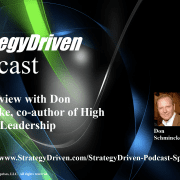How Sustainable Innovation is Changing the Face of Business

The earth overshoot day, which documents how many resources the earth can resupply in a given year, is getting shorter. In 2018, it was August 1st. In 1970, it was January 1st, meaning that in less than 50 years we went from using resources that could be replenished, to requiring 1.7 Earths to sustain our consumption.
Businesses in all industries must take note and must take action, and with these top innovations leading the way the future is indeed looking brighter.
The Rise of Sustainable Innovation
Sustainable innovation has arisen for two main reasons:
Public Awareness
In some cases referred to as the “Attenborough Effect,” the public is now massively aware of how their consumption is affecting the planet. After the airing of Blue Planet, a huge outcry over single-use plastics was resounded throughout the world. To date, it is estimated that there has been a 53% reduction of single-use plastics, and many countries around the world have banned or limited the use of plastic for disposable purposes.
Environmental Need
The environment can simply not handle it. Without change companies will die out and so too will entire communities.
Top Sustainable Innovations to Be Aware Of
That is why all businesses must be aware of the sustainable innovations occurring around the world. That way you can both partner with the right companies that are leading the way to a greener future, and get an idea of what you can personally do for the planet with your own company. Balancing the environment and profits can be a challenge, but when you take in the fact that over-consumption might put you entirely out of business, you have no choice.
Innovative Materials Changing Fashion
Fashion is a massive industry with many subsects, such as accessories, shoes, and handbags. The practice has been so damaging to the environment that entire lakes have disappeared, thousands have died, millions are underpaid or work in forced labor conditions, rivers run bright with chemical dyes, and much more.
Fashion is disastrous for the environment, right down to the cotton production that fuels the industry. That is why many innovative textiles are coming onto the scene that aims to use more ecologically friendly plants or waste.
1. Hemp
Hemp is a very durable material that looks and feels similar to linen, but is much easier to produce and less demanding on the environment.
2. Nettle
Stinging nettles are often considered to be pests, but nettle is enjoying a reemergence as a popular textile. People have been using it to create a durable fabric for over 2000 years, and unlike hemp can legally be grown around the world.
3. Ground Coffee
Used coffee grounds are often considered to be a waste product, but with recent innovations in Taiwan, coffee grounds are now turning into fibers. They are created with a polymer, and then spun into a yarn.
4. Pineapple Fabric
The vegan, waste-friendly alternative to leather is made from pineapple. Other innovations have also produced great results with mushrooms. Pineapple, however, has been tested and is very durable.
Circular Economy Innovation
The circular economy is essentially a system that reuses waste rather than sending anything to be recycled or to fill up a landfill. Plastic bottles, for example, can be recycled, but as their quality degrades they would not qualify as a circular item. On the other hand using coffee grounds to make fabric, which then has another life cycle of its own that can decompose safely or be remade into new fabric, is.
Innovations in Agriculture
The issue of agriculture is a big one. How do we realistically intend to feed 9 billion people and growing? We will need to adopt new practices that push farming away from the countryside (and far away from deforestation) and instead:
5. Underground Production
Underground production will use LED lights and unused urban areas like subway tunnels to produce food. Though this is not enough to feed a city, it is certainly a good start. What needs to be pushed further is the adoption of personal gardens in cities, from vertical gardens to balcony gardens.
6. Power of AI
Using sensors, AI, and machine learning agriculture should theoretically be able to optimize production and reduce water consumption and pesticide use.
7. Use of LED
LED is paving the way for increased crop growth rate, allowing more to be produced in a single crop yielding. These LED lights from Nordic Lights are designed to provide the best possible vision and clarity to ensure maximum efficiency and minimal distractions. LED lights will also be instrumental in urban farming and can help reduce the amount of land that will need to be cleared for agriculture in the future. You can read more here.
Reusing Waste to Build Our Cities
Though not a perfect solution, many are attempting to give plastic a new home in an industrial building. Low-cost homes are being made out of plastic bottles and other building materials, roads are being made out of single-use plastics, and even fabrics are being created out of recycled plastic (different than polyester). Using plastic like this is not a complete solution, but it does give more direction on how to reuse these indestructible materials.
Recapturing Water
Water consumption needs to be reduced dramatically, which is why water recycling is paramount for sustainable innovation. Capturing water already used in production and reusing it again and again is the best way to limit the amount of fresh water taken from the environment.
Use of Sustainable Energy
Wind farms are now more cost effective to build than a coal plant for the first time in history, but to truly rely on sustainable energy more innovative methods will need to be produced. Companies and individuals alike will then need to actively choose to use sustainable energy producers to further incentivize dirty power companies to go green.












Leave a Reply
Want to join the discussion?Feel free to contribute!